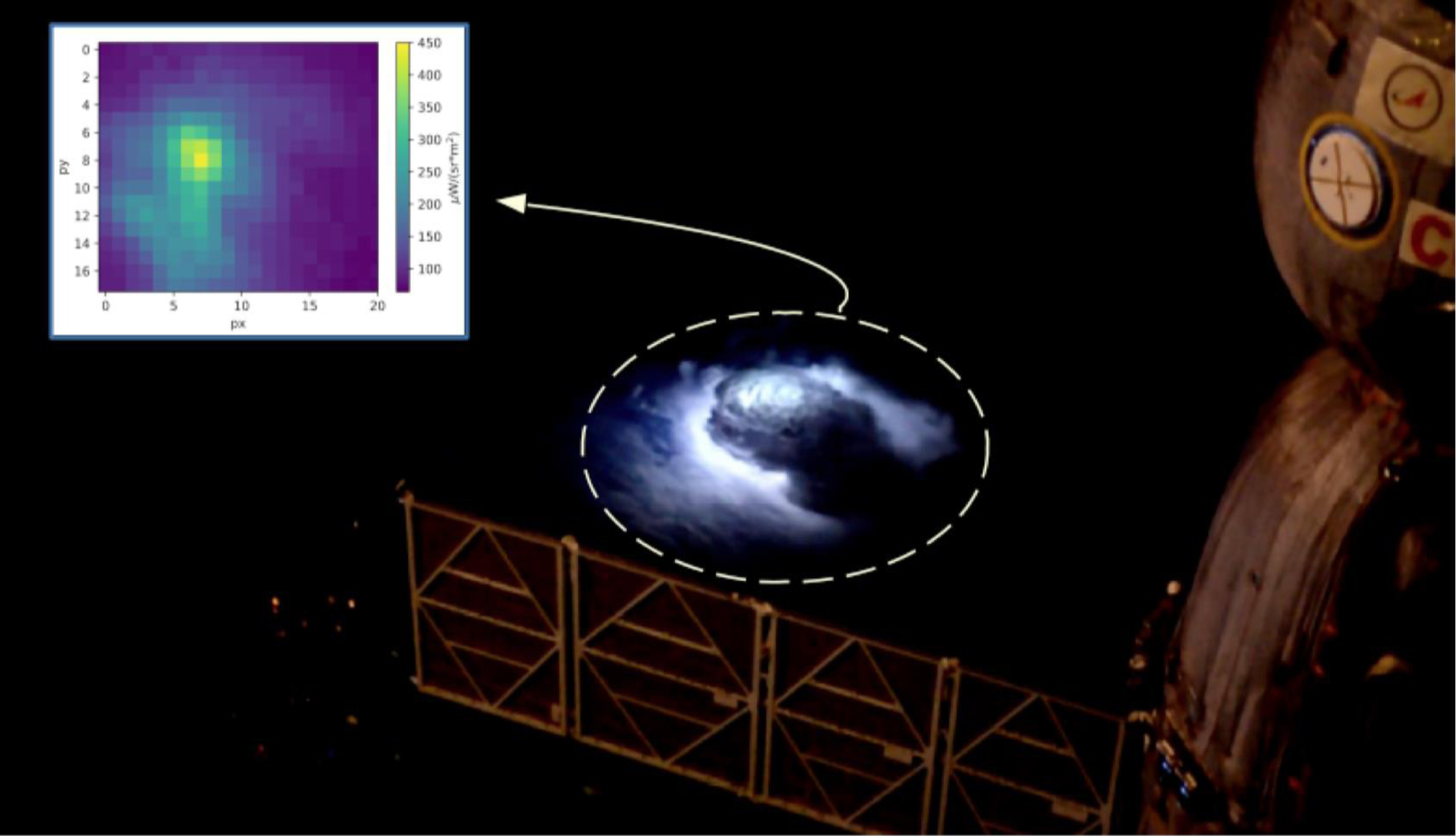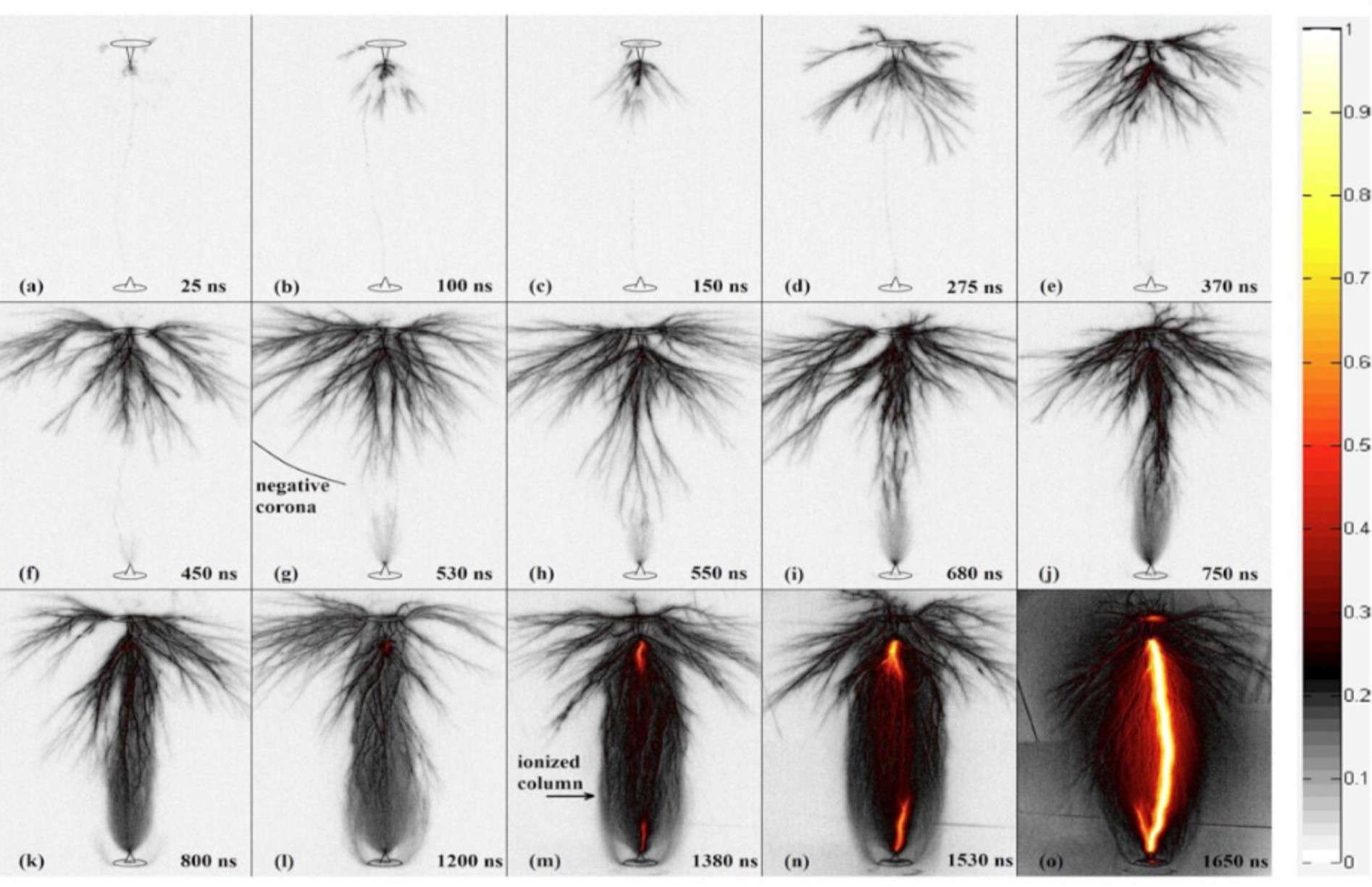Confirmed the existence of a new electrical phenomenon in the atmosphere: blue flashes produced by cold electrical discharges
Unlike lightning, these electrical discharges very efficiently activate certain chemical reactions that can produce nitrous oxide and ozone, gases that contribute to the greenhouse effect. The study, led by researchers from the Institute of Astrophysics of Andalusia (IAA-CSIC), has been possible thanks to data provided by the ASIM space mission of the European Space Agency (ESA)
The family of electrical phenomena that occur in our atmosphere, which for centuries was believed to consist only of storm lightning, continues to grow: about three decades ago Transient Light Events were discovered, a series of very fast luminous events related to lightning that tend to happen tens of kilometers above the clouds; and in 1994 terrestrial gamma-ray bursts were discovered, which originate in the upper part of storm clouds and were an unexpected finding, since until then it was thought that gamma radiation only came from outer space. Now, a study confirms the presence of a type of cold electrical discharges inside the clouds, which produces blue flashes and pulsed radio emissions.
Pulsed radio emissions from clouds, bipolar and very fast, were found in the 80s of the last century. "Only recently, in 2016, a study suggested that these bipolar pulses could be the result of very fast processes typical of cold discharges, that is, those that, unlike lightning, do not heat the surrounding air -says Sergio Soler, researcher of the IAA-CSIC that heads the investigation-. But their origin remained uncertain: in 2013, FORTE satellite detected a series of optical flashes that seemed to be associated with these bipolar radio pulses, but it could not be ascertained whether they were lightning or another type of electrical discharge ”.
The research carried out by the group of atmospheric electricity (TRAPPA) of the Institute of Astrophysics of Andalusia has solved this question by simultaneously detecting, for the first time, blue flashes and bipolar radio pulsed emission from storm clouds. Optical detections have been possible thanks to the ASIM instrument, installed on the International Space Station, and the absence of brightness in the typical range of rays has allowed to confirm that it is a type of natural electric discharge whose formation and presence in storm clouds was suspected.

"Our data indicate that these are cold electrical discharges, formed by filaments of ionized air, or plasma, in which the temperature of the electrons is very high, more than 70,000 degrees, although the air temperature is that of the environment. Specifically, they would be corona-type discharges, which when studied in the laboratory are characterized by their filamentous appearance and bluish color (they emit in blue and near ultraviolet), and which also occur in everyday conditions, such as in power lines, high voltage lines”, points out Francisco J. Gordillo Vázquez, researcher at the Institute of Astrophysics of Andalusia (IAA-CSIC) who coordinates the study.
These types of discharges show a large thermal imbalance, of up to tens of thousands of degrees, between the temperature of the ambient air and that of the electrons within the plasma filament, and because of this they can activate special chemical reactions in the atmosphere: thus, while lightning (or thermal discharges) produce nitrogen oxides and some ozone, these cold discharges produce significant amounts of nitrous oxide and ozone.
"Nitrous oxide has a global warming potential about three hundred times higher than that of carbon dioxide and tends to eliminate environmental ozone, so its precise quantification and knowledge of its sources and sinks in the atmosphere is essential," says Francisco J. Gordillo Vázquez (IAA-CSIC).
These flashes, which occurred during ASIM's flight over an intense lightning storm in Indonesia in 2019, solve the origin of the bipolar radio pulses, but raise a number of questions about the properties of corona-like discharges in clouds, about its formation processes, temporal dynamics and possible chemical influence in our atmosphere. "Our work has opened the door to the possibility of mapping how abundant they are, in what circumstances (or electrical environment) they are produced and what their global geographic distribution may be (where they are produced), an issue we are working on and on which very little is known today”, concludes Gordillo Vázquez (IAA-CSIC).

S. Soler et al. “Blue optical observations of narrow bipolar events by ASIM suggest corona streamer activity in thunderstorms”. Journal of Geophysical Research: Atmospheres, 125, e2020JD032708. https://doi.org/10.1029/2020JD032708
Instituto de Astrofísica de Andalucía (IAA-CSIC)
Unidad de Divulgación y Comunicación
Silbia López de Lacalle - sll[arroba]iaa.es - 958230532
http://www.iaa.es
http://www-divulgacion.iaa.es

